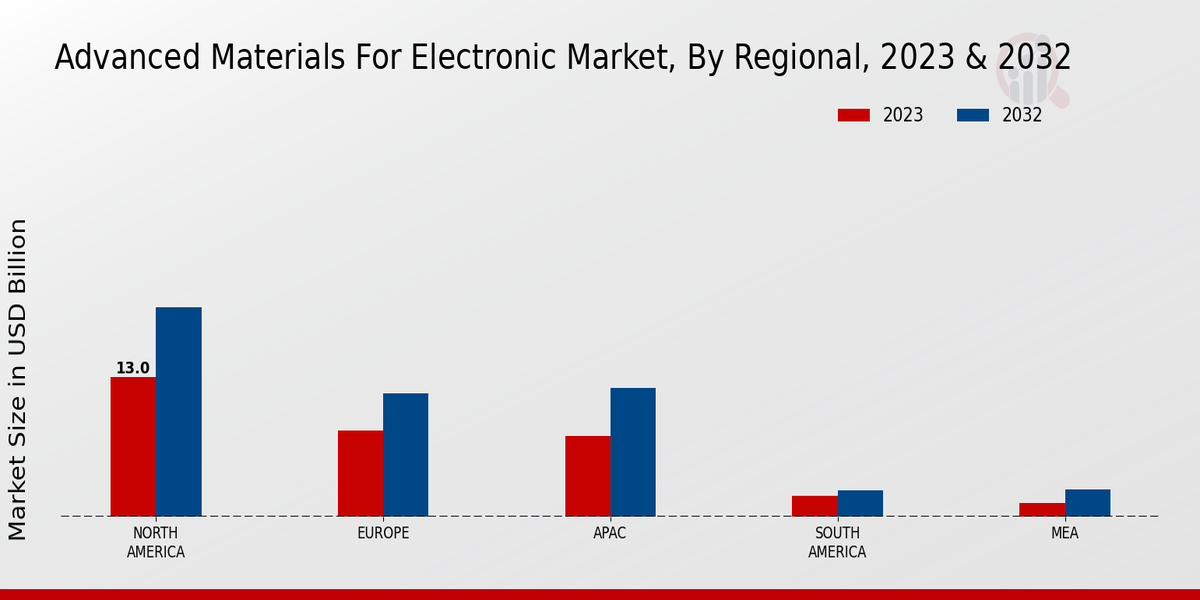Emergence of Smart Electronics
The Advanced Materials for Electronics Market is witnessing a transformative shift with the emergence of smart electronics. The proliferation of smart devices, including smart home appliances, wearables, and connected vehicles, necessitates the use of advanced materials that support enhanced functionality and connectivity. These materials are crucial for enabling features such as sensors, flexible displays, and energy-efficient components. The smart electronics market is expected to grow at a CAGR of around 10% over the next five years, driven by consumer demand for intelligent and interconnected devices. This growth trajectory highlights the importance of advanced materials in facilitating the development of innovative electronic solutions that meet modern consumer expectations.
Rising Demand for Miniaturization
The Advanced Materials for Electronics Market is experiencing a notable surge in demand for miniaturization across various electronic devices. As consumer preferences shift towards compact and lightweight gadgets, manufacturers are compelled to adopt advanced materials that facilitate smaller form factors without compromising performance. This trend is particularly evident in sectors such as mobile devices and wearables, where the integration of advanced materials enables enhanced functionality in limited spaces. Reports indicate that the market for miniaturized electronic components is projected to grow significantly, with a compound annual growth rate (CAGR) of approximately 8% over the next five years. Consequently, the adoption of advanced materials is likely to play a pivotal role in meeting these evolving consumer demands.
Growth in Renewable Energy Technologies
The Advanced Materials for Electronics Market is poised for growth driven by the increasing adoption of renewable energy technologies. As the world shifts towards sustainable energy solutions, there is a rising need for advanced materials that enhance the efficiency and performance of electronic components used in solar panels, wind turbines, and energy storage systems. For instance, materials such as perovskite solar cells are gaining traction due to their superior efficiency compared to traditional silicon-based cells. The renewable energy sector is expected to witness substantial investments, with projections indicating a market size expansion of over 15% annually. This growth underscores the critical role of advanced materials in supporting the transition to cleaner energy sources.
Advancements in Semiconductor Technology
The Advanced Materials for Electronics Market is significantly influenced by ongoing advancements in semiconductor technology. As the demand for faster and more efficient electronic devices escalates, the semiconductor industry is increasingly reliant on innovative materials that enhance performance and reduce power consumption. Emerging materials such as graphene and silicon carbide are being explored for their potential to revolutionize semiconductor applications. The semiconductor market is anticipated to reach a valuation exceeding 600 billion by 2025, driven by the proliferation of smart devices and the Internet of Things (IoT). This trend suggests that the integration of advanced materials will be essential for meeting the performance benchmarks required in next-generation electronics.
Increased Investment in Research and Development
The Advanced Materials for Electronics Market is benefiting from increased investment in research and development (R&D) initiatives. As companies strive to innovate and maintain competitive advantages, there is a growing emphasis on developing new materials that can enhance electronic performance and sustainability. Governments and private entities are allocating substantial funds towards R&D in advanced materials, with a focus on applications in electronics. This trend is likely to foster collaborations between academia and industry, leading to breakthroughs that could redefine material properties and functionalities. The R&D investment landscape is projected to grow, potentially exceeding 100 billion in the next few years, indicating a robust commitment to advancing the capabilities of electronic materials.


















Leave a Comment